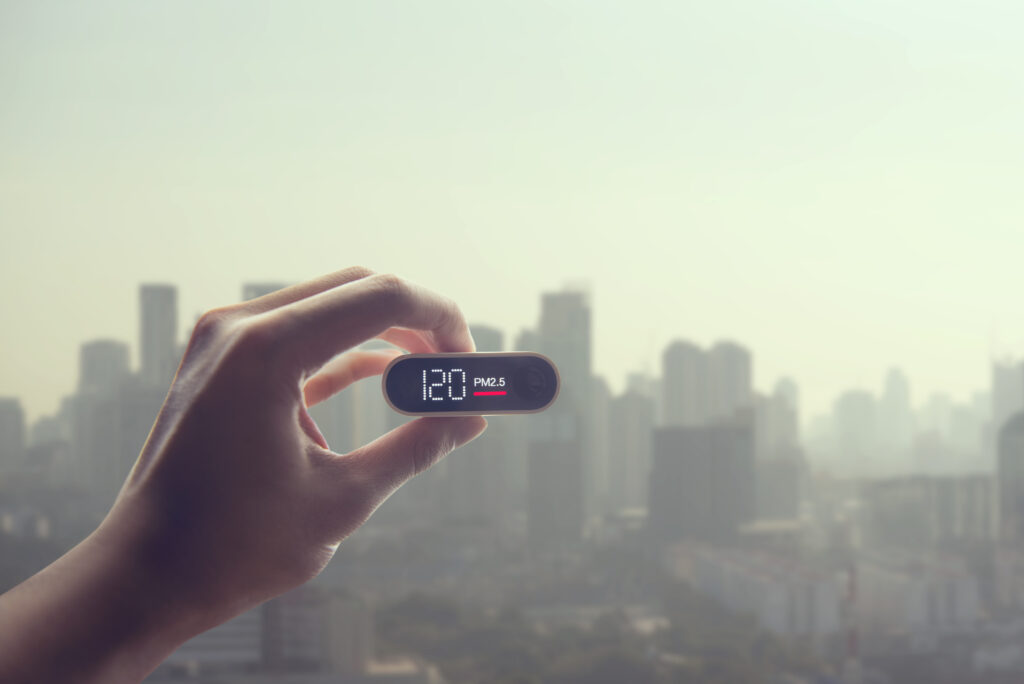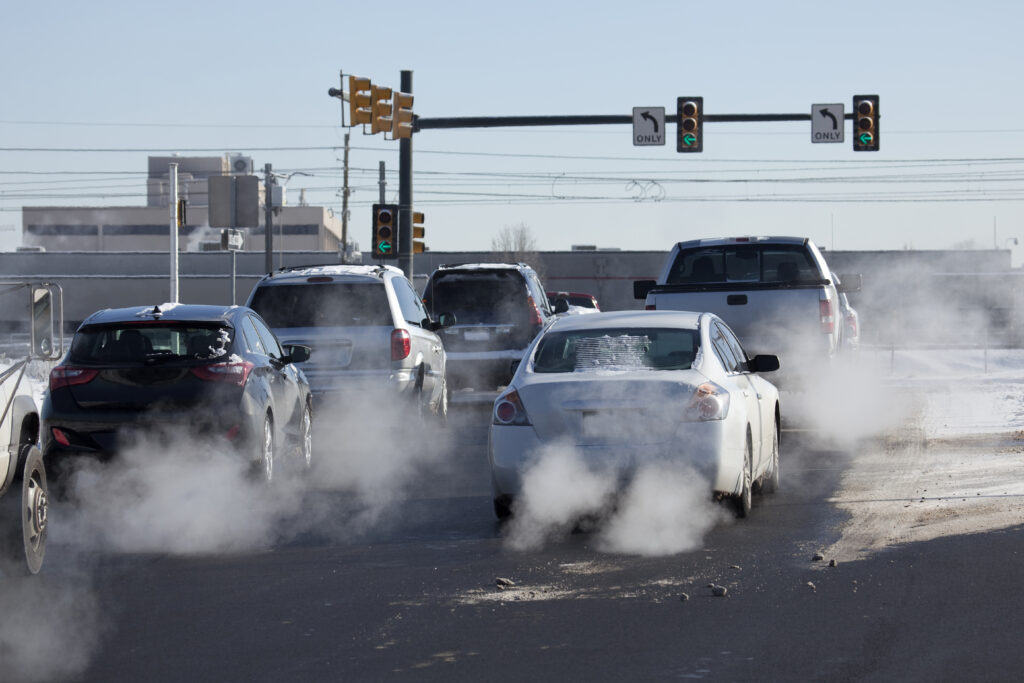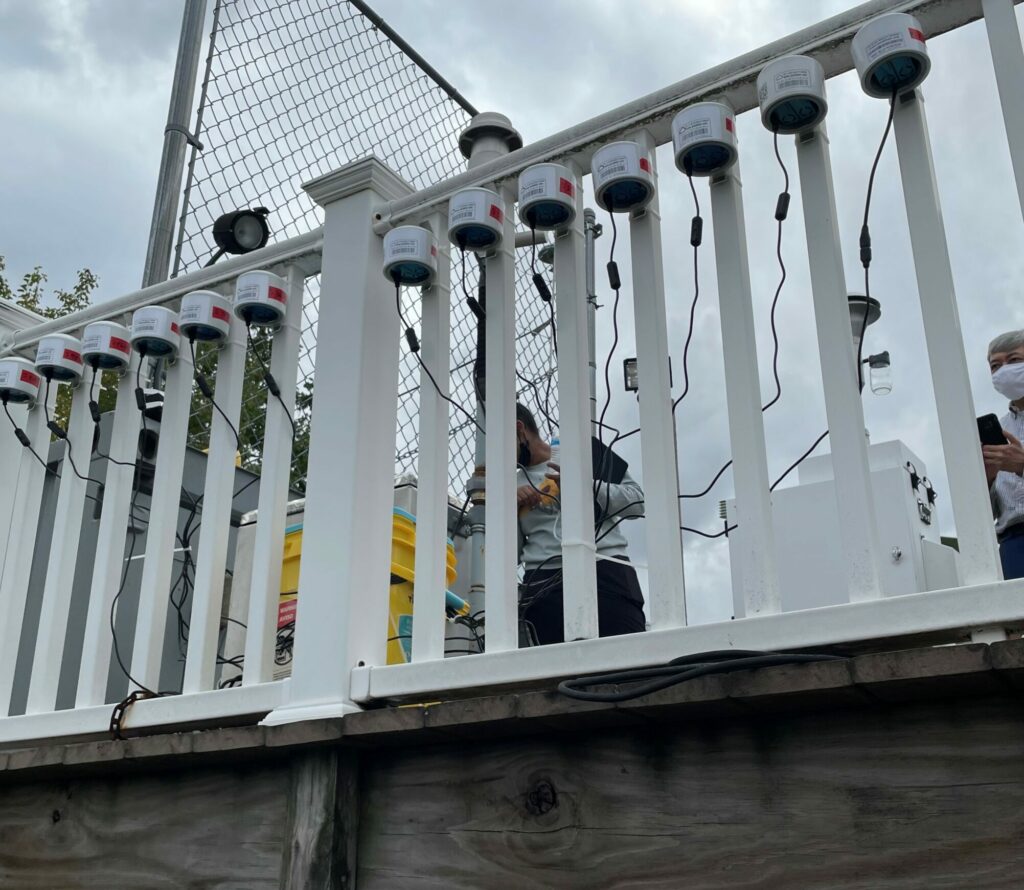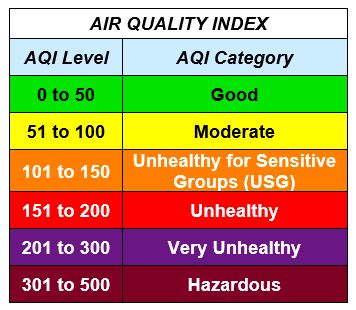
Community Science Air Monitoring
DEP monitors air pollution throughout New Jersey to protect public health and the environment
Communities can now also monitor their own air quality, using portable and relatively affordable instruments. These “low-cost sensors” range in price from a few hundred to a few thousand dollars.
Use a low-cost sensor to:
- Learn more about air pollution
- Find local sources of pollution
- Monitor hotspots
- Collect data for your own research
What’s the Best Approach to Using Low-Cost Sensors?

What Do You Want to Find Out or Show With Your Measurements?
Before choosing a project type and low-cost sensor, first identify:
- The air pollution issue that concerns you
- The field conditions you are likely to encounter
- The length of time you should collect data
- The potential quality of these measurements
Use the information above to develop a question or goal that air monitoring can help to answer.
Here are a few examples:
- How can I teach my students about air quality and integrate hands-on data collection into the lesson plan?
- What is my exposure to air pollution during my usual walking route?
- Are pollutant levels higher near a source in my neighborhood?

What Pollutants Do You Want to Measure?
To get the sensor that will fit your needs, you have to decide on a target pollutant or pollutants. In other words, what should your low-cost sensor be able to measure?
Some pollutants can be found in the air everywhere, such as the ones that NJDEP monitors:
- Ozone (O3)
- Particulate matter (PM2.5)
- Nitrogen dioxide (NO2)
- Sulfur dioxide (SO2)
- Carbon monoxide (CO)
These criteria pollutants have National Ambient Air Quality Standards that are set at levels protective of human health and the environment.
Other pollutants may not be routinely monitored, and may even be difficult to measure. Some can have local impacts when they are emitted by nearby facilities or mobile sources (cars, buses or trucks).
What Kinds of Low-Cost Sensors Are Available?

Low-cost sensors range in price from a few hundred to a few thousand dollars, while regulatory monitors like those used by NJDEP can cost tens of thousands of dollars. Some give results in actual concentrations, some use a yes/no light to indicate the presence of a pollutant, and others use a color code to indicate whether levels are of concern. The sensor you select should be able to collect data that will answer your questions.
RESOURCES TO HELP YOU SELECT THE APPROPRIATE LOW-COST SENSORS
- USEPA Air Sensor Toolbox for Citizen Scientists, Researchers and Developers
- USEPA Air Sensor Educational Video Series
- South Coast [CA] Air Quality Management District Resources:
SENSORS AVAILABLE FROM NJDEP
- NJDEP has a limited number of low-cost sensors that community groups can borrow. Contact the Bureau of Air Monitoring at bamweb@dep.nj.gov about what is currently available.
- For an example of how sensors can be used for a classroom project, see the Student Air Monitoring Project.
What Kind of Funding Assistance is Available?
Funding is sometimes made available by the U.S. Environmental Protection Agency (USEPA) or other public health agencies for community groups to carry out studies using low-cost sensors. The funding may require partnering with a university or state agency.
What Do My Sensor Readings Mean & What Are Normal Levels?
The following sources can help you understand different levels of air pollution:
- USEPA Guidance on Air Sensor Readings
- Current Air Quality Levels
- Current NJ Monitor Readings – Click on the map for the most recent 1-hour average value for specific pollutants. Longer-term values can be found in the annual Air Quality Report.
- National Ambient Air Quality Standards (NAAQS) – NAAQS are set at a level that is protective of public health and the environment. Click on a pollutant in the table to access information on health effects. States operate monitoring networks like the one run by NJDEP to determine whether the NAAQS are being met.
| AIR QUALITY INDEX | |
| AQI Level | Public Health Risk |
| Good (0-50) | Air pollution poses little or no risk. |
| Moderate (51-100) | Air quality is acceptable but may affect people who are unusually sensitive. |
| Unhealthy for Sensitive Groups (101-150) | Members of sensitive groups may experience health effects. |
| Unhealthy (151-200) | Everyone may begin to experience health effects. |
| Very Unhealthy (201-300) | Health warning: The entire population is likely to experience health effects. |
| Hazardous (301-500) | Health alert: Everyone may experience serious health effects. |
What Type of Low-Cost Sensor Project Works for You?
Read through the 4 project descriptions here before deciding which type of project you’d like to do.
NJDEP has developed technical guidance for four types of low-cost sensor projects. After reading through the project descriptions, use the table below to link to guidance documents that will help you develop and carry out that specific type of project.
Contact the Bureau of Air Monitoring at bamweb@dep.nj.gov if you have questions about doing a community science project.
Also see the “Additional Resources” below.
Guidance for 4 Types of Low-Cost Air Sensor Projects
| Type | Purpose | Description | LeveL of Effort |
|---|---|---|---|
| 1 | General Information and Education | Sensors indicate the presence or absence of pollutants, or relative quantities, with indicator lights or color coding. | Low |
| 2 | Personal Exposure Monitoring | Wearable sensors measure air pollution that individuals are exposed to during their daily routines. | Medium-High |
| 3 | Supplementary Network Monitoring | Sensors are placed in an area where the regulatory network is lacking to better understand air quality in those locations. | Medium-High |
| 4 | Hotspot Identification and Characterization | A cluster of sensors is placed downwind of or around a source to identify its potential air pollution impacts. | High |
Additional Resources
- Air Sensors Public Service Announcement
- Air Sensors: Regulatory Data & Sensor Data Quality
- Air Sensors: Measurements and Your Health
- Air Sensors: Sources of Air Quality Information
- Air Sensor Training #1: Community in Action – A Comprehensive Guidebook on Air Quality Sensors
- Air Sensor Training #2: Understanding Air Quality and Monitoring
- Example of Type 1 Educational Community Science Project:
- Example of Type 2 Personal Exposure Project: Personal exposures to traffic-related particle pollution among children with asthma in the South Bronx, NY
- Example of type 3 Supplementary Monitoring Project: A low-cost particulate matter (PM2.5) monitor for wildland fire smoke
- Example of Type 4 Hotspot Identification & Characterization Project: Mapping pollution exposure and chemistry during an extreme air quality event (the 2018 Kīlauea eruption) using a low-cost sensor network




